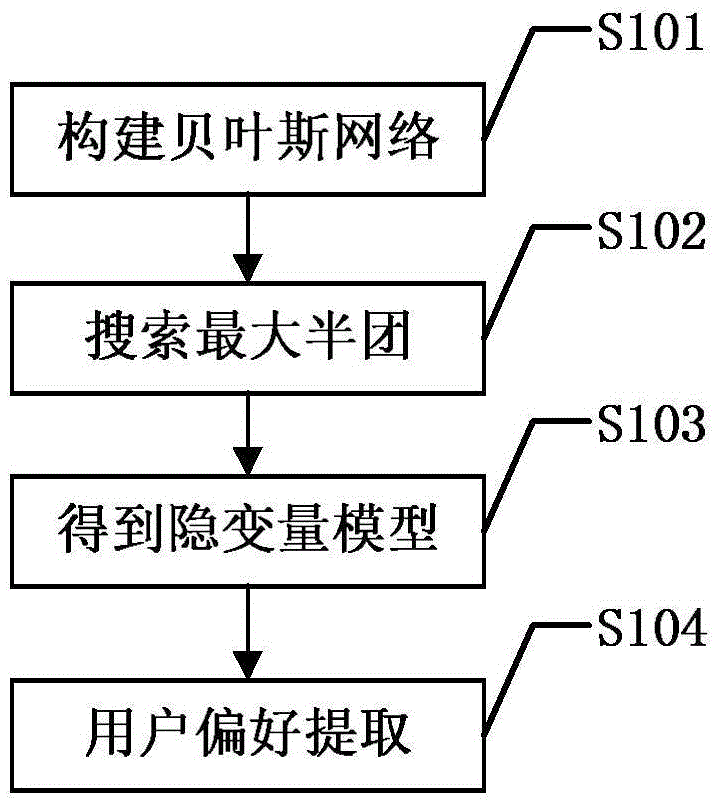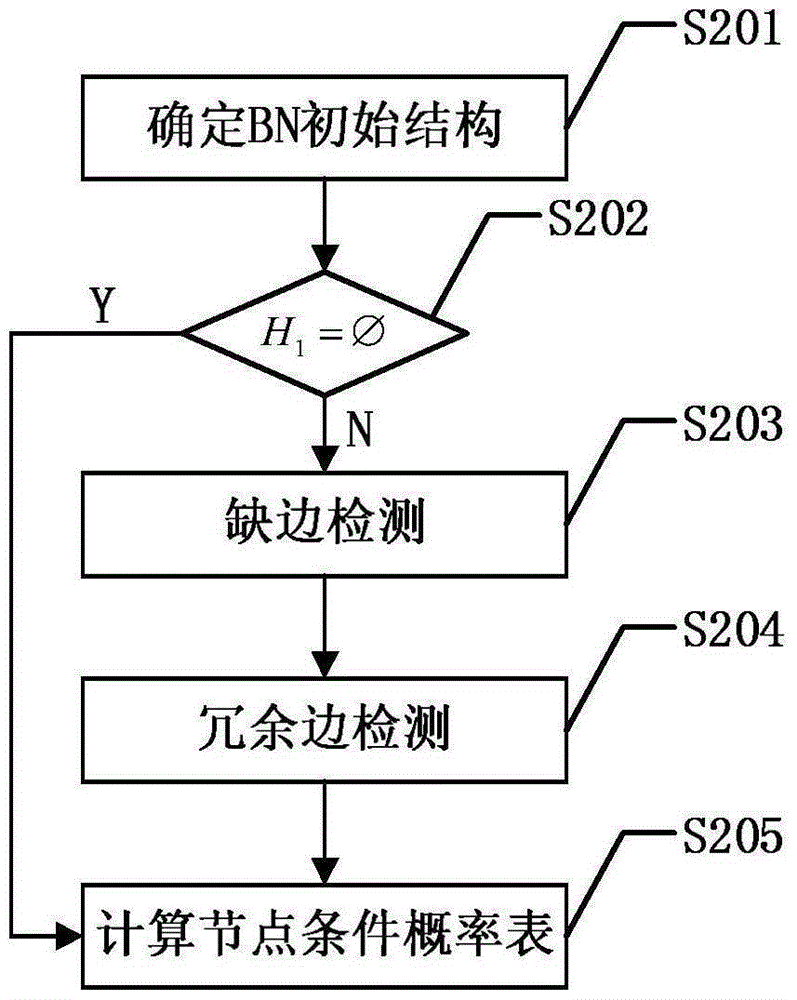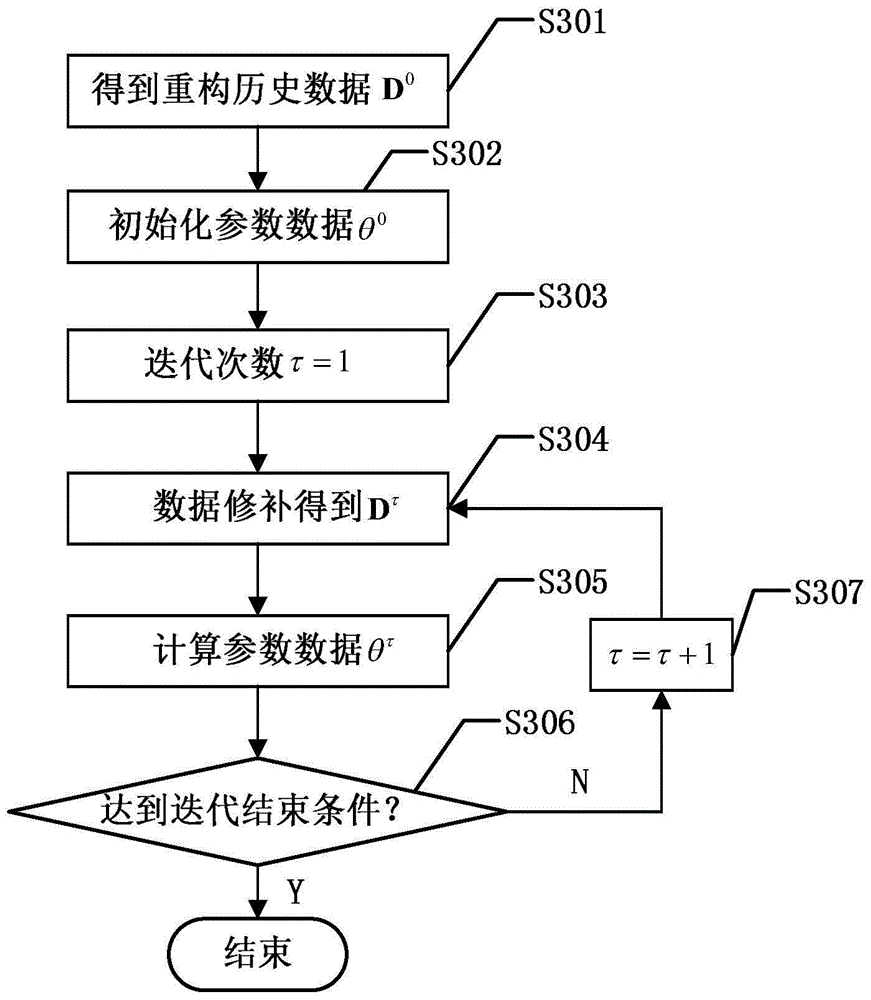Latent variable model-based user preference extraction method
An extraction method and hidden variable technology, applied in special data processing applications, instruments, electrical digital data processing, etc., to achieve clear dependencies, high practicability and feasibility, and simplified model structure
- Summary
- Abstract
- Description
- Claims
- Application Information
AI Technical Summary
Problems solved by technology
Method used
Image
Examples
Embodiment
[0024] figure 1 is a flow chart of the hidden variable model-based user preference extraction method of the present invention. like figure 1 As shown, the user preference extraction method based on hidden variable model of the present invention comprises the following steps:
[0025] S101: Construct a Bayesian network:
[0026] Select N attributes from commodity-related attributes as required to form an attribute set V={X 1 ,X 2 ,...,X N}, according to the historical data of these N attributes d={d 1 , d 2 ,...,d M}Construct the Bayesian network, each data sample d in the historical data d m Both include data of N attributes, and the value range of m is m=1,2,...,M. In the Bayesian network, each attribute is also called a variable, which is a node in the Bayesian network. In this embodiment, the traditional method of constructing a Bayesian network from data is used to analyze the conditional independence relationship between attributes. figure 2 It is a flow chart...
PUM
 Login to View More
Login to View More Abstract
Description
Claims
Application Information
 Login to View More
Login to View More - R&D
- Intellectual Property
- Life Sciences
- Materials
- Tech Scout
- Unparalleled Data Quality
- Higher Quality Content
- 60% Fewer Hallucinations
Browse by: Latest US Patents, China's latest patents, Technical Efficacy Thesaurus, Application Domain, Technology Topic, Popular Technical Reports.
© 2025 PatSnap. All rights reserved.Legal|Privacy policy|Modern Slavery Act Transparency Statement|Sitemap|About US| Contact US: help@patsnap.com



